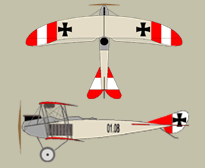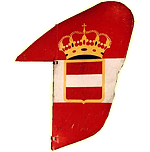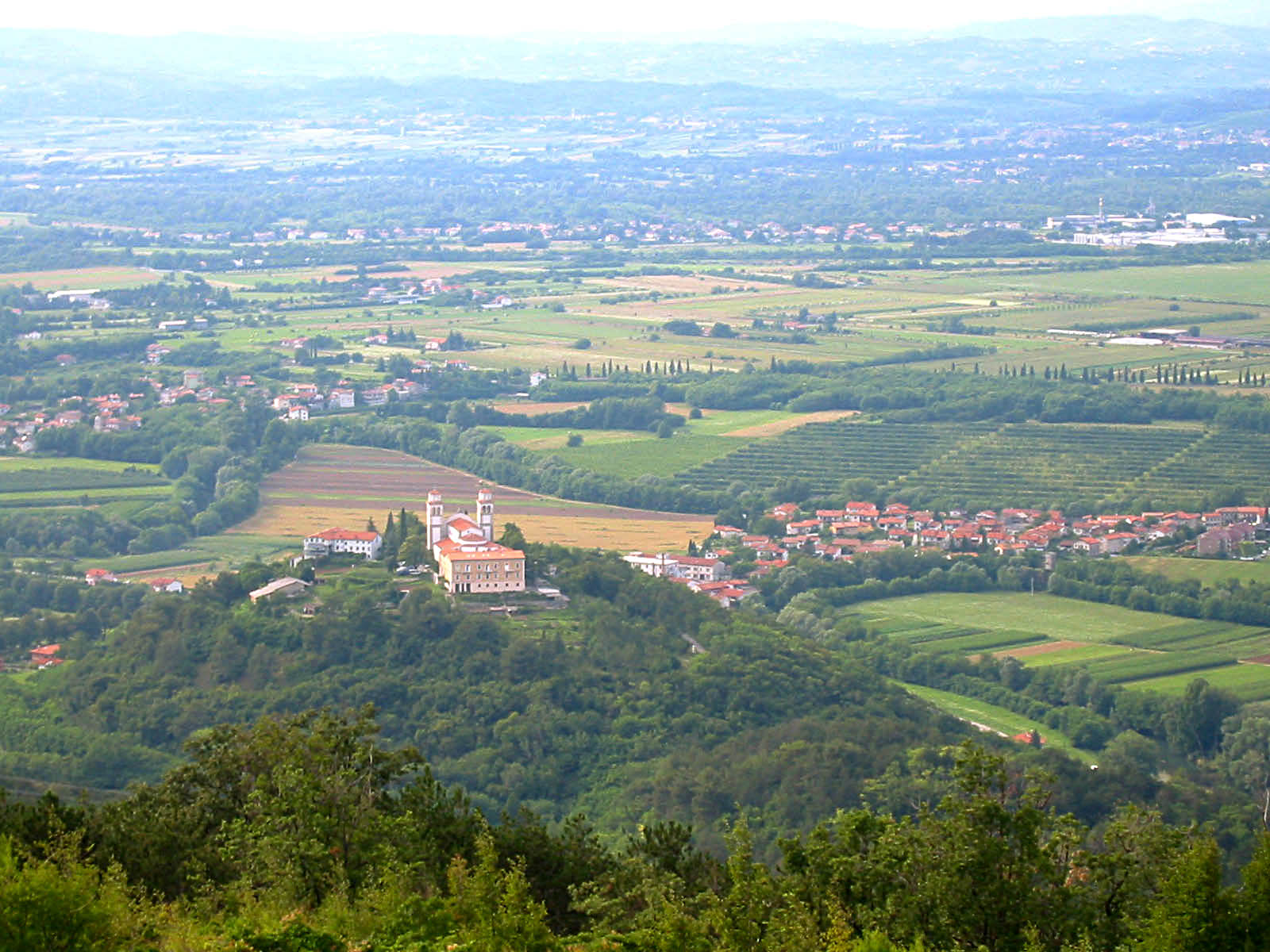|
Godwin Brumowski
__NOTOC__ Godwin Karol Marian von Brumowsky (26 July 1889 – 3 June 1936) was the most successful fighter ace of the Austro-Hungarian Air Force during World War I. He was officially credited with 35 air victories (including 12 shared with other pilots), with 8 others unconfirmed because they fell behind Allied lines. Just before the war ended, von Brumowski rose to command of all his country's fighter aviation fighting Italy on the Isonzo front. Life before entry into air service Godwin von Brumowski was born into a military family in Wadowice, Galicia (in present-day Poland). He attended the Imperial and Royal Technical Military Academy in Mödling near Vienna and graduated as a lieutenant commissioned into the 29th Field Artillery Regiment on 18 August 1910. He was serving in the 6th Artillery Division as regimental adjutant and had just turned 25 years of age when war was declared against Serbia on 28 July 1914. He served on the Eastern Front against Russia, winnin ... [...More Info...] [...Related Items...] OR: [Wikipedia] [Google] [Baidu] |
Wadowice
Wadowice (; ger, Frauenstadt – Wadowitz) is a town in southern Poland, southwest of Kraków with 19,200 inhabitants (2006), situated on the Skawa river, confluence of Vistula, in the eastern part of Silesian Foothills (Pogórze Śląskie). Wadowice is known for being the birthplace of Karol Wojtyła, later Pope John Paul II and Godwin von Brumowski, Austria-Hungary’s best flying ace with 35 credited and an additional 8 possible wins in the air. History The first permanent settlement in the area of today's Wadowice was founded in the late 10th century or early 11th century. According to a local legend, the town was founded by a certain Wad or Wład, a short form for the Slavic name of Ladislaus ( pl, 'Władysław'). The town was first mentioned as ''Wadowicze'' in St. Peter penny register in the years 1325–1327. In 1327 it is also mentioned (under the same name) in a fief registry sent from prince John I Scholastyk of Oświęcim to Bohemian king John I, Count of Luxe ... [...More Info...] [...Related Items...] OR: [Wikipedia] [Google] [Baidu] |
Austro-Hungarian Air Force
The Austro-Hungarian Aviation Troops or Imperial and Royal Aviation Troops (german: Kaiserliche und Königliche Luftfahrtruppen or , hu, Császári és Királyi Légjárócsapatok) were the air force of the Austro-Hungarian Empire until the empire's demise in 1918; it saw combat on both the Eastern Front and Italian Front during World War I. History The Air Service began in 1893 as a balloon corps () and would later be re-organized in 1912 under the command of Major Emil Uzelac, an army engineering officer. The Air Service would remain under his command until the end of World War I in 1918. The first officers of the air force were private pilots with no military aviation training. At the outbreak of war, the Air Service was composed of 10 observation balloons, 85 pilots and 39 operational aircraft. By the end of 1914, there were 147 operational aircraft deployed in 14 units. Just as Austria-Hungary fielded a joint army and navy, they also had army and naval aviation ar ... [...More Info...] [...Related Items...] OR: [Wikipedia] [Google] [Baidu] |
Otto Jindra
Hauptmann Otto Jindra (18 March 1886, Chlum u Třeboně – 2 May 1932) was an Austro-Hungarian flying ace during World War I, credited with nine aerial victories while flying as an aerial observer. His abilities as both leader and administrator led to his accelerated promotion and appointments to command of aviation units despite his lack of pilot's credentials. After World War I and Austria-Hungary both ended, Jindra became a major mover in founding a Czechoslovakian air arm, which he eventually rose to command. Early life Otto Jindra was born on 18 March 1886 in Chlumetz.''Above the War Fronts: The British Two-seater Bomber Pilot and Observer Aces, the British Two-seater Fighter Observer Aces, and the Belgian, Italian, Austro-Hungarian and Russian Fighter Aces, 1914-1918: Volume 4 of Fighting Airmen of WWI Series: Volume 4 of Air Aces of WWI'', pp. 184–185. He grew to be an athletic young man; he was an equestrian, a swimmer, and a skier. He was an enthusiastic cyclist, ... [...More Info...] [...Related Items...] OR: [Wikipedia] [Google] [Baidu] |
Czernowitz
Chernivtsi ( uk, Чернівці́}, ; ro, Cernăuți, ; see also other names) is a city in the historical region of Bukovina, which is now divided along the borders of Romania and Ukraine, including this city, which is situated on the upper course of the Prut river in the Southwestern Ukrainian territory. Chernivtsi serves as the administrative center for the Chernivtsi raion, the Chernivtsi urban hromada, and the oblast itself. In 2021, the Chernivtsi population, by estimate, is and the latest census in 2001 was 240,600. The first document that refers to this city dates back to 1408, when Chernivtsi was a town in the region of Moldavia, formerly as a defensive fortification, and became the center of Bukovina in 1488. In 1538, Chernivtsi was under the control of the Ottoman Empire, and the Turkish control lasted for two centuries until 1774, when Austria took control of Bukovina in the aftermath of the Russo-Turkish War. Chernivtsi (known at that time as ) became th ... [...More Info...] [...Related Items...] OR: [Wikipedia] [Google] [Baidu] |
Imperial And Royal Aviation Troops
The Austro-Hungarian Aviation Troops or Imperial and Royal Aviation Troops (german: Kaiserliche und Königliche Luftfahrtruppen or , hu, Császári és Királyi Légjárócsapatok) were the air force of the Austro-Hungarian Empire until the empire's demise in 1918; it saw combat on both the Eastern Front and Italian Front during World War I. History The Air Service began in 1893 as a balloon corps () and would later be re-organized in 1912 under the command of Major Emil Uzelac, an army engineering officer. The Air Service would remain under his command until the end of World War I in 1918. The first officers of the air force were private pilots with no military aviation training. At the outbreak of war, the Air Service was composed of 10 observation balloons, 85 pilots and 39 operational aircraft. By the end of 1914, there were 147 operational aircraft deployed in 14 units. Just as Austria-Hungary fielded a joint army and navy, they also had army and naval aviation ar ... [...More Info...] [...Related Items...] OR: [Wikipedia] [Google] [Baidu] |
Medal For Bravery (Austria-Hungary)
The Medal for Bravery (german: Tapferkeitsmedaille) was a military decoration of Austria-Hungary established in 1789 and awarded for bravery in battle until the dissolution of the Austro-Hungarian Empire in 1918. History Habsburg Empire 1789-1918 The Medal for Bravery was created by Joseph II, Holy Roman Emperor, Emperor Joseph II on 19 July 1789 in order to recognize courage in combat by personnel below commissioned officer, commissioned rank (courageous acts performed by commissioned officers could after 1757 be rewarded by appointment to the Military Order of Maria Theresa). From 1789 to 1915, the Medal for Bravery existed in three classes: ''Golden Medal for Bravery'', ''Silver Medal for Bravery 1st Class'' and ''Silver Medal for Bravery 2nd Class''. The latter honour was similar in design to the Golden Medal and the Silver Medal 1st Class, but considerably smaller. A fourth class, the ''Bronze Medal for Bravery'', was introduced on 14 February 1915 during World War I. It was t ... [...More Info...] [...Related Items...] OR: [Wikipedia] [Google] [Baidu] |
Eastern Front (World War I)
The Eastern Front or Eastern Theater of World War I (german: Ostfront; ro, Frontul de răsărit; russian: Восточный фронт, Vostochny front) was a theater of operations that encompassed at its greatest extent the entire frontier between Russia and Romania on one side and Austria-Hungary, Bulgaria, the Ottoman Empire, and Germany on the other. It stretched from the Baltic Sea in the north to the Black Sea in the south, involved most of Eastern Europe, and stretched deep into Central Europe as well. The term contrasts with "Western Front", which was being fought in Belgium and France. During 1910, Russian General Yuri Danilov developed "Plan 19" under which four armies would invade East Prussia. This plan was criticised as Austria-Hungary could be a greater threat than the German Empire. So instead of four armies invading East Prussia, the Russians planned to send two armies to East Prussia, and two armies to defend against Austro-Hungarian forces invading from Gal ... [...More Info...] [...Related Items...] OR: [Wikipedia] [Google] [Baidu] |
Second Lieutenant
Second lieutenant is a junior commissioned officer military rank in many armed forces, comparable to NATO OF-1 rank. Australia The rank of second lieutenant existed in the military forces of the Australian colonies and Australian Army until 1986. In the colonial forces, which closely followed the practices of the British military, the rank of second lieutenant began to replace ranks such as ensign and cornet from 1871. New appointments to the rank of second lieutenant ceased in the regular army in 1986. Immediately prior to this change, the rank had been effectively reserved for new graduates from the Officer Cadet School, Portsea which closed in 1985. (Graduates of the Australian Defence Force Academy (ADFA) and the Royal Military College, Duntroon (RMC-D) are commissioned as lieutenants.). The rank of second lieutenant is only appointed to officers in special appointments such as training institutions, university regiments and while under probation during training. ... [...More Info...] [...Related Items...] OR: [Wikipedia] [Google] [Baidu] |
Vienna
en, Viennese , iso_code = AT-9 , registration_plate = W , postal_code_type = Postal code , postal_code = , timezone = CET , utc_offset = +1 , timezone_DST = CEST , utc_offset_DST = +2 , blank_name = Vehicle registration , blank_info = W , blank1_name = GDP , blank1_info = € 96.5 billion (2020) , blank2_name = GDP per capita , blank2_info = € 50,400 (2020) , blank_name_sec1 = HDI (2019) , blank_info_sec1 = 0.947 · 1st of 9 , blank3_name = Seats in the Federal Council , blank3_info = , blank_name_sec2 = GeoTLD , blank_info_sec2 = .wien , website = , footnotes = , image_blank_emblem = Wien logo.svg , blank_emblem_size = Vienna ( ; german: Wien ; ba ... [...More Info...] [...Related Items...] OR: [Wikipedia] [Google] [Baidu] |
Mödling
Mödling () is the capital of the Austrian district of the same name located approximately 14 km south of Vienna. Mödling lies in Lower Austria's industrial zone (Industrieviertel). The Mödlingbach, a brook which rises in the Vienna Woods, flows through the town. Near Achau it joins with the Schwechat. Woodland occupies a large part of the municipality, part of the Föhrenberge ('Pine Mountains'). Located immediately south of Vienna, and within the boundaries of the district of Mödling, is one of the largest shopping centres in Europe: Shopping City Süd (SCS). Geography Grapes are grown on the slopes of the Wienerwald; the area is called ''Thermenregion'', where one can find much ''Heurigen'' (the most recent year's wine). Wiener Neudorf to the east, and Maria Enzersdorf to the north, merge directly into Mödling. South of Mödling is Gumpoldskirchen, separated by the Eichkogel with its very special flora. In the west a narrow street runs through Vorderbrühl, for ... [...More Info...] [...Related Items...] OR: [Wikipedia] [Google] [Baidu] |
Imperial And Royal Technical Military Academy
The Imperial and Royal Technical Military Academy (German: ''k.u.k. Technische Militärakademie'') was a military training facility founded in 1717 for certain officer groups of the Habsburg monarchy. The location of the academy changed several times in the course of its existence: originally located in Vienna, it was located in Klosterbruck near Znaim from 1851 to 1869, in the ''Stiftskaserne'' in Vienna from 1869 to 1904 and finally in Mödling from 1904 to 1918. The Higher Technical Education Institute Mödling emerged from the academy in 1919. History 18th century The origins of the Technical Military Academy of the Austro-Hungarian Army up to 1918 go back to Field Marshal Prince Eugene of Savoy. During the War of the Spanish Succession he recognized the shortage of military engineers in the Habsburg army and urged Emperor Charles VI to set up a corresponding training facility (formal engineering academy). This was then implemented provisionally in 1717 and permanently in 172 ... [...More Info...] [...Related Items...] OR: [Wikipedia] [Google] [Baidu] |
Isonzo Front
The Battles of the Isonzo (known as the Isonzo Front by historians, sl, soška fronta) were a series of 12 battles between the Austro-Hungarian and Italian armies in World War I mostly on the territory of present-day Slovenia, and the remainder in Italy along the Isonzo River on the eastern sector of the Italian Front between June 1915 and November 1917. Italian military plans In April 1915, in the secret Treaty of London, Italy was promised by the Allies some of the territories of Austro-Hungarian Empire which were mainly inhabited by ethnic Slovenes and Austrian Germans. Italian commander Luigi Cadorna, a staunch proponent of the frontal assault who claimed the Western Front proved the ineffectiveness of machine guns, initially planned breaking onto the Slovenian plateau, taking Ljubljana and threatening Vienna. The area between the northernmost part of the Adriatic Sea and the sources of the Isonzo River thus became the scene of twelve successive battles. As a result ... [...More Info...] [...Related Items...] OR: [Wikipedia] [Google] [Baidu] |








